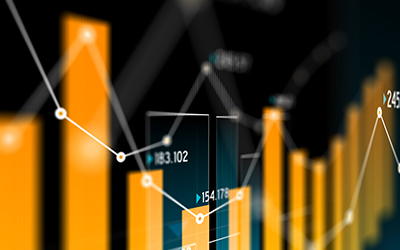Viewpoints from Bob Simpson
A few years back, I was speaking with one of my clients in the construction industry. The company was making some disruptive (but positive) plan changes. She was worried that any type of change would be viewed with suspicion.
She wanted to get the right message out to her employees but had always felt uncertain about workers on job sites, where printed and mailed communications wouldn’t be as effective.
Fortunately, we’d just built a mobile-enabled website for her – complete with analytics – including information on geographic interactions. Our campaign drove people to the site and monitored the results. Immediately, I could show her the impact: out in the field, in the areas where she had concerns, we had hundreds of hits and interactions on the site – with a heavy focus on the content that laid out the new changes.
As I walked her through the analytics report, she looked at me and said, “They’re finally listening to us.” In one of my more melodramatic moments, I slightly corrected her, “Now we know they’re listening to us.”
When communications are tied to analytics, they are more than just creative or educational tools. They are game-changers.
Why should I use communication analytics?
Most companies use analytics to determine that their communication spend has been wise and their strategy sound. I use communication analytics to give the audience a chance to talk to me, providing feedback on the approach we’ve taken, and allowing me the opportunity to adjust the strategy.
Historical feedback-gathering methods (think surveys and focus groups) are valuable and can provide great information, but in my experience, they have logistical drawbacks. You gain the ability to flex your strategy on a rapid basis if you can gather impressions on a message, without the logistical lift of organizing a focus group or administering a survey.
When should I use communication analytics?
Always. Creating a running trend of communication interactions and how they are tied to behaviors tells an impressive story. Instead of rolling out the same campaign and pieces year after year, analytics reports allow communication experts to show our clients what is working and what needs to be adjusted. I recommend sitting down with a client at least once a quarter to review results.
Which metrics have the greatest value?
Though this can be situational, there are some simple communication metrics that I’ve found to be valuable.
Top 5 Pages
Focus on the most-visited subpages (excluding the landing page since it can be assumed it’s visited most often). This metric can tell you a lot about what your audience is interested in and where they gravitate.
Geographic Heat Mapping
As with my client example in the introduction, this can confirm that a targeted audience is receiving the message you’ve created for them. If it isn’t, you know it’s time to adjust.
Device-Type Tracking
This metric is commonly tied to website analytics and tells you what type of device an audience member is using while engaging with the site (laptop, desktop, tablet, mobile). In some cases, the analytics can track the device model type (ex., iPhone, Samsung Galaxy, etc.). This is a valuable metric when you’re trying to drive your population to mobile-based solutions.
Views/Opens
The metric itself might be called something different depending on what you’re sending, but the measurement is the same: how many people are interacting with the message you’ve sent? These analytics can help inform follow-ups and downstream strategy.
Engagement Tracking
Tracking how long a user spends interacting with the content can tell the client a valuable story. Though a powerful medium, video is prone to running beyond the attention span of the viewer. For a webpage, the analytics around time tracking tell a less direct story but can help you understand the audience’s journey through the site. Are they entering the site at the landing page and immediately leaving (called Bounce Rate), or are they looking around for the information they need? When they get to a page, how long are they spending there?
Where do we start?
Basically, any digitally distributed communication can include analytics. Some are more sophisticated than others: a website can provide very robust analytics compared to a text message. What’s critical is ensuring that deliverables and campaigns work together to provide measurable results – and that you track these engagements over time to show how interactions are changing, and where to make adjustments.
The days when communication was about sending a message out into the ether, never to return, are over.
Check out COVID-19 resources for employee benefits and risk management at the EPIC coronavirus update center
See results from our In It Together COVID-19 pulse surveys by visiting epicbrokers.com/insights/preparing-for-the-new-normal
EPIC offers these opinions for general information only. EPIC does not intend this material to be, nor may any person receiving this information construe or rely on this material as, tax or legal advice. The matters addressed in this article and any related discussions or correspondence should be reviewed and discussed with legal counsel prior to acting or relying on these materials.
Related Content
Products
Employee Benefits Consulting
Our dedicated benefits team is focused on delivering better outcomes – to both your benefits program and ...
Products
Communications & Engagement
Our Communications & Engagement team develops effective campaigns that enhance workforce awareness and ...
Products
Compliance
We provide comprehensive consulting services and in-depth education regarding the ever-changing employee ...


